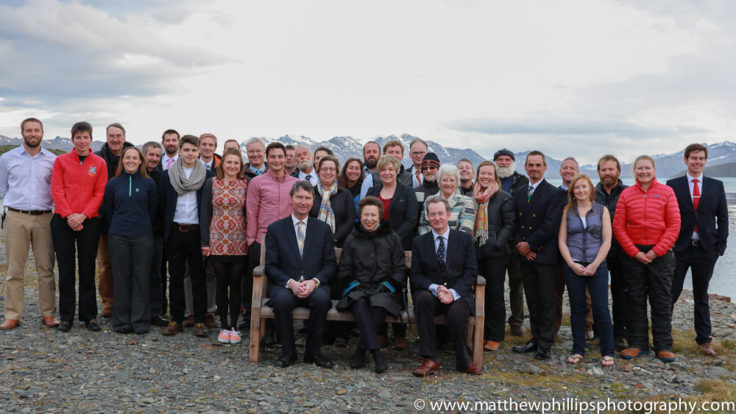19 February, 2016 King Edward Point
Life on the sub Antarctic Island of South Georgia working for BAS is an amazing experience. South Georgia has the perfect combination of spectacular landscape and incredible wildlife. We have millions of seals and penguins, thousands of albatrosses, petrels and other seabirds. We have sea, mountains, glaciers, lakes and waterfalls. As a result, the outdoors and the wildlife feature in just about every day to day activity.
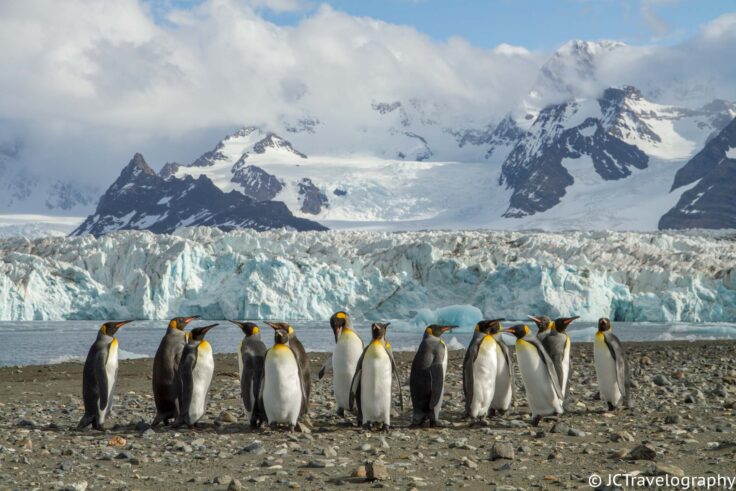
One of South Georgia’s richest resources are its fisheries for Patagonian Toothfish and Mackerel Icefish. We have one of the most sustainable, successfully managed fisheries in the world. Part of the reason for this, is that the Government reinvest a large chunk of the revenue made from fisheries and tourism on the island into science which is used to support this long term management of natural resources. South Georgia is unique from other BAS bases in that although the science is run by BAS it is funded by the South Georgia Government. As a result, the majority of long term science carried here relates back to the fisheries. We have a Fisheries Scientist here who works directly with the fishermen and fisheries managers to carry out annual stock assessments. We also have a Higher Predator Scientist (that’s me!) who works intensively with the Gentoo Penguins and Antarctic Fur Seals here in order to monitor the overall health of the ecosystem
The Higher Predator Biologist has the interesting role of studying marine mammals and birds and this compliments the fish science. My two main study species have been selected due to their dependence on Krill, especially during the breeding season. Krill is an integral part of almost every Antarctic ecosystem but is relatively difficult and expensive to monitor directly. However, by monitoring changes in Gentoo and Fur Seal biology, we get a good indication of krill biomass around South Georgia and the overall health of the ecosystem. I monitor three aspects of their biology, which are; population dynamics, diet and growth and development.
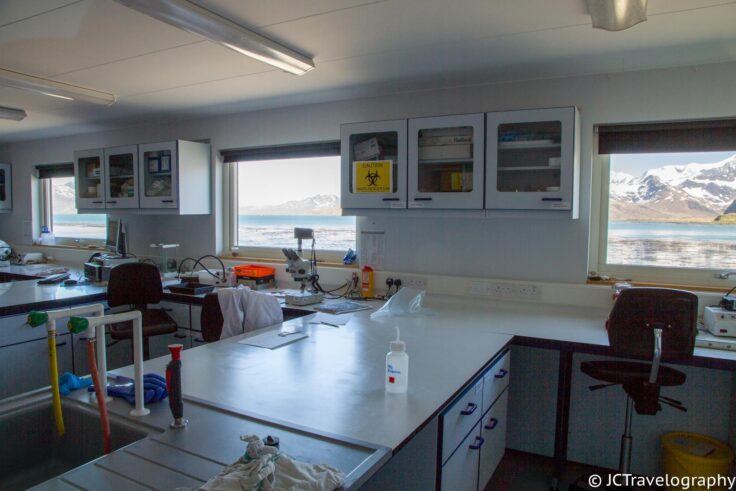
I also carry out work with the Northern and Southern Giant Petrels. Interestingly, since a large proportion of their diet is carrion, they are often most successful in the years where there is a high mortality of penguins chicks and seals pups. I monitor these birds on adjacent peninsulas which means that I get great opportunities to explore other parts of the island at the same time.
Life at King Edward Point
If that all sounds a bit dry and academic, being here also enables me to observe the fascinating behaviour of the various native wildlife: for example, the comical aggressiveness of macaroni penguins; the ruthlessness of the brown skuas in picking off gentoo chicks (coupled with the determination the seemingly affable gentoo parents display when defending them) and the king penguins carrying their eggs on their feet and demonstrating the dextrous footwork of Lionel Messi! There is also the dramatic sight of glaciers “calving” colossal icebergs into the sea and huge graveyards of outsize bones from the shameful days of mass whaling.
In some respects we are much less isolated than the BAS bases centred on the Antarctic Peninsula, but life on South Georgia is without pubs, restaurants and cinemas! The Government’s Fisheries Patrol Vessel, Pharos SG, moves between the Falklands and South Georgia every 6 weeks or more and therefore we get regular supplies of mail and fresh food. However, because there is no runway, and a ship is our only evacuation option in the case of a medical emergency. This means if you are injured, it could be two weeks before you get to a hospital!
With most of the team being based here for a year or more, maintaining morale is important. So we find all sorts of ways of keeping ourselves entertained. We have an annual yacht regatta where the team compete to sail a handmade yacht across Gull Lake. We compete in pub quizzes, a half marathon, a cross base 48 hour film making competition and we jump at any excuse for fancy dress. We also have bi-weekly film nights, the most recent of which involved a horror film shown in the old whaling station at Grytviken.
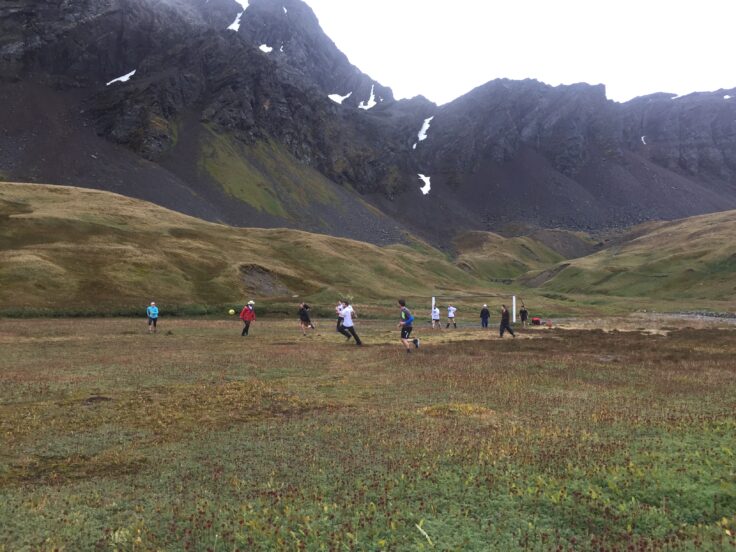
An important role of the BAS team here is support of the Government. We have two Government Officials stationed on base permanently. Part of their roles are to carry out inspections of all visiting tourist and fishing vessels. In order to do this, we have a fleet of two ribs and two jet boats. This fleet conveniently doubles up as a taxi service to support the science team and ferry us to remote peninsulas to holiday away from King Edward Point. Popular trips are across to the Barff Peninsula to see either St Andrew bay, a colony of 500,000 King Penguins, or Rookery Point to see the 7,000 or so Macaroni Penguins. We also have a huge area open to us for skiing as long as you are happy to ski up as well as down the hills!
Unfortunately for most of us on base we are too busy to celebrate Christmas, since it is peak summer season and the breeding season is in full flow. As a result mid-winter is a much larger celebration for us. We manage to string the celebration out for a week. Events include a midwinter dip in the shallows (followed by a sauna), mid-winter Olympics and the week culminates in a posh meal where the team exchange hand crafted gifts.
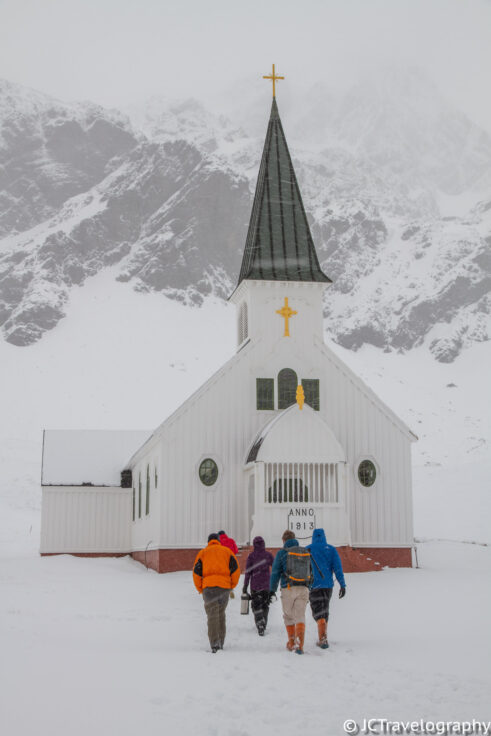
As I touched upon earlier, South Georgia makes a large proportion of its income from tourism. The islands are visited by roughly 8,000 tourists a year, mainly on board cruise ships. These give us the opportunity to go aboard and be spoilt with incredible food and drinks, and to mix with some amazing people from all around the world. This is a very important opportunity for the Government, because it means tourists get to hear first-hand from us on what we are doing here to preserve the unique environment for future generations. To be part of this project is really special. But by far the most illustrious visitor arrived a couple of weeks ago on board the Pharos SG. The team were thrilled to welcome, HRH Princess Anne, the patron of SGHT.
